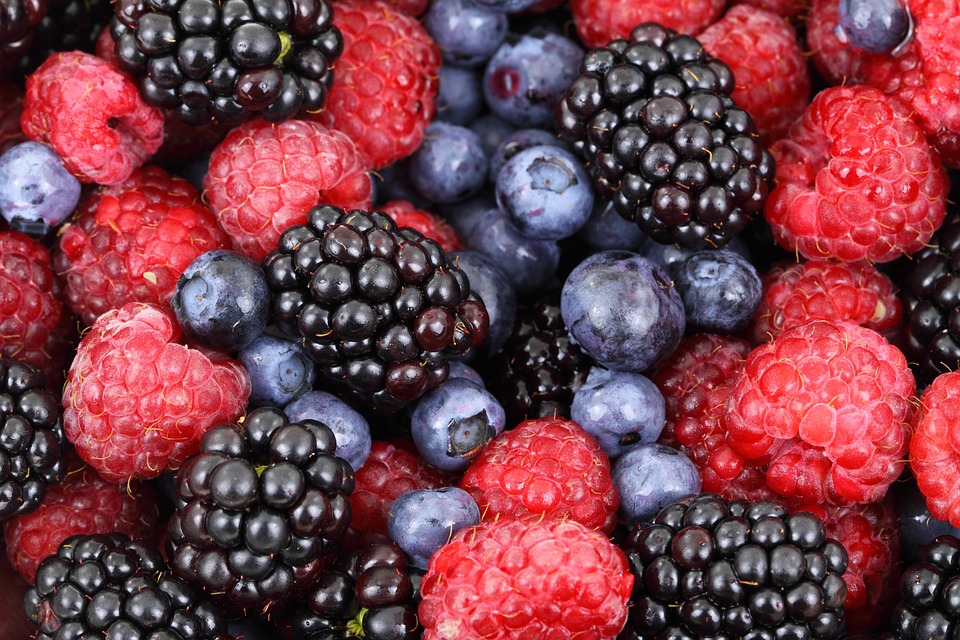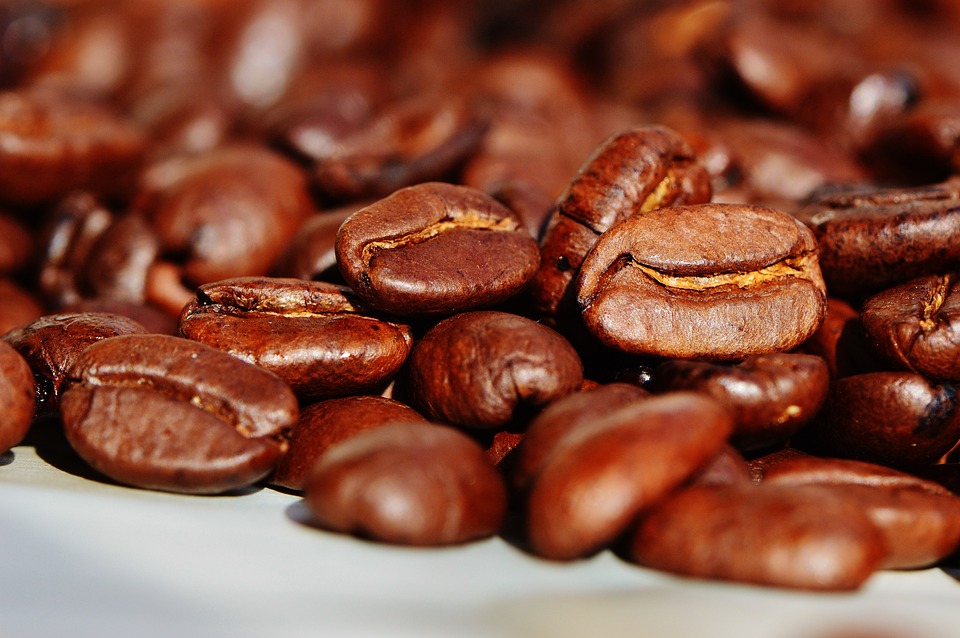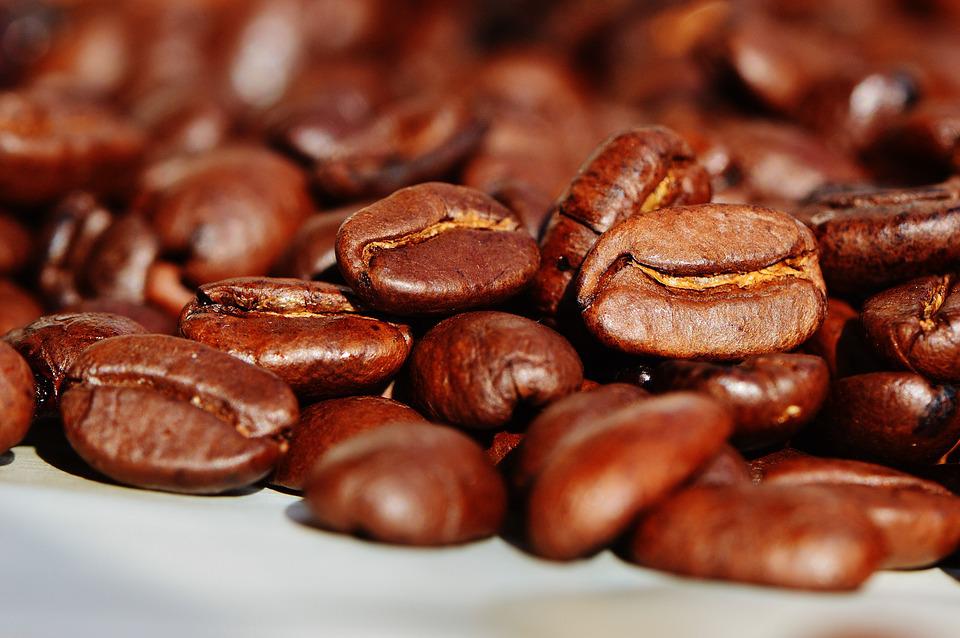
Secondary metabolites are present in many plant foods and are commonly known as polyphenols. The benefits of their intake include reducing the incidence of cardiovascular disease, diabetes, and cancer, as well as improving neurodegenerative outcomes. Some of the main foods that contain caffeine are coffee, tea, and chocolate. Fruit is a major source of nutrition, and berries are a particularly delicious source of a wide range of polyphenol nutrients. There are a number of ways to increase polyphenol uptake and produce healthier polyphenol-rich foods with specific compositions to target specific health effects. We could exploit the genetic diversity of plants to select varieties that have enhanced levels of specific polyphenols that could help prevent diseases. Although it could be long-term, modern molecular breeding techniques could exploit natural variation and beneficially alter polyphenol content and composition by working with variation induced by environmental and agronomic factors. We could modify plants to either overexpress certain genes or increase the production of specific polyphenols. However, adding polyphenols to fruit could make it less palatable as they contribute to properties that affect the senses (e.g. the astringency of tannins). Expressing plant biosynthetic pathways in microbial vectors may be a feasible option for producing polyphenols as a pharmaceutical. We could design processing methods to enhance the food’s polyphenolic composition or content. Fermentation and roasting can have a big impact on the polyphenol composition and potential health benefits of tea, cocoa, and coffee. Milling, heat treatment, pasteurization, and juicing can have significant effects on polyphenol profiles, and new extraction methods offer new opportunities. Encapsulation methods can help preserve specific polyphenols during digestion and ensure that they have targeted health effects. We could also look at reforming products to change the amount or kind of polyphenols they contain. Adding berry juices to a staple apple or citrus juices can increase polyphenol levels and provide specific polyphenol components. Reformulating foods with polyphenol-rich factions derived from “wastes” could increase polyphenol intake, thereby improving product acceptability and shelf life, and preventing food spoilage. The co-formulation of foods can play a role in how easily the body can absorb certain polyphenols and how active they are once absorbed. Polyphenols can potentially interfere with the effectiveness of drugs, but this provides another avenue to enhance polyphenol intake. In other words, we could create foods that are rich in phenolic components to help fight specific diseases.
More and more research is suggesting that polyphenols in food can have positive effects on human health. There is a lot of evidence that suggests that polyphenol intake is linked to a lower risk of colorectal cancer and inflammation. There have been many studies, both in test tubes and with animals, that suggest that there are benefits to consuming green tea. These benefits include a reduced incidence of cardiovascular disease, diabetes, and cancers, as well as improved neurodegenerative outcomes.
Structural diversity of polyphenols and main dietary sources
Secondary plant metabolites are polyphenols that must have a characteristic phenolic ring but can have very diverse structures. Phenolic acids, such as hydroxybenzoic acids and hydroxycinnamic acid derivatives, and stilbenes and lignans, are all relatively simple structures with recognizable phenolic cores. flavones, anthocyanidins, and flavanones Flavonoids are groups of chemicals that have a specific shape and are commonly found in plants. Some of the most common types of flavonoids are flavones, anthocyanidins, flavanones, flavan-3-ols or catechins, flavonols, and anthocyanidins. Citrus fruits also contain other flavonoid groups, such as flavanones.
The complex large molecular weight tannin derivatives are split into two types: condensed tannins and hydrolyzable tannins. Condensed tannins are made up of flavan-3-ol groups, while hydrolyzable tannins are made of esters of ellagic acid derivatives. Despite their complexity, (poly)phenols can be decorated with other groups like sugars, alcohols, and acids. Flavonoids are most commonly found in foods with attached sugars, acids, or alcohol. This means that, for example, hydroxycinnamic acid is most often found as chlorogenic acid, which is an ester with quinic acid. Anthocyanidins and flavonols are rarely found without attached sugars.
Plant-based foods are the main source of polyphenols, and excellent analytical work by various groups has outlined the polyphenol content of common foods. Fruits are the highest source of intake, but coffee and tea contribute more overall because people consume more of them. The main sources of polyphenols in someone’s diet vary depending on what they typically eat. For example, in the UK, tea is a major source of polyphenols, while in Mediterranean diets, wine and fruit are major sources. The polyphenol content in berries is high, and there is evidence that increased berry intake has had positive effects on health in Scandinavian diets. The widespread popularity of berries makes them a good way to consume more polyphenols, which are believed to have health benefits. Although coffee and tea contain certain polyphenols (flavan-3-ols in teas and hydroxycinnamic acid derivatives in coffee), berry intake provides higher levels of specific nutrients such as anthocyanins and ellagitannins.
Processing methods for polyphenol-enriched products
For centuries, humans have been altering the polyphenol composition of foods by processing them. Fermentation and roasting of tea, cocoa, and coffee beans can have a significant impact on the polyphenol composition and potential health benefits of these foods. An example of this would be oxidation occurring during black tea processing, which then leads to the formation of orange-brown theaflavin products from flavan-3-ols. The fermentation process during winemaking can often lead to significant degradation of grape anthocyanins. However, this process can also result in the production of unusual anthocyanin derivatives. An example of this would be Vitamin A derivative that is created from a reaction with pyruvate during red wine production. The pigments that are created from the process of wine-making can change the color and tone of the wine. While these pigments are more stable when they are consumed, it is not well understood how they are absorbed. Fruit wines made from Salal berries retain red colouration due to their high content of stable anthocyanin diglycosides. These diglycosides are composed of two molecules of sugar (pentoses) which give the berries their colour.
One possible way to create juices with higher levels of polyphenols would be to mix berry juices with more commonly consumed juices such as oranges or apples. Adding berry juices, purees, and ‘wastes’ to apple/citrus juices can easily double the polyphenol content and introduce specific novel polyphenol components, such as anthocyanins or ellagitannins. Studies on black currant-enriched apple juices and raspberry-enriched orange juices have illustrated that the added coloration can enhance acceptability without reducing palatability.
Berry purees can be used instead of clarified juices to increase polyphenol intake. The purees have the added benefits of non-extractable polyphenols, which are either covalently attached to cell walls or embedded in the tissue matrix. This means that they are not available for absorption and thus may contribute to the prevention of cardiovascular disease and other chronic conditions. The polyphenol content of foods that have been neglected and underrecorded is called the ‘missing polyphenols.’ The compounds in blueberries that are responsible for their health benefits are antioxidants. These antioxidants can have positive effects on the gut, such as promoting the excretion of lipids, preventing cancer throughout the gastrointestinal tract, and encouraging the growth of colonic microbiota.
It is well known that the addition of pectinolytic enzymes during the juicing process can have various effects on the composition of polyphenols. This can result in a balance of the release of polyphenols from non-extractable polyphenols and the degradation of flavonoid glycosides. As new methods for extracting and processing polyphenols become available (e.g. supercritical CO2, pressurized water, microwave-enabled systems, pulsed electric fields, etc.), it is necessary to determine their effects on polyphenol content and composition.
Some possible uses for berry wastes or juicing residues include improving nutrient stability in a bakery or meat products or inhibiting lipid oxidation. This means that they could potentially be a healthier option than the synthetic antioxidants that are currently being used. They also contain higher levels of polyphenols and dietary fiber.
Other foods rich in polyphenols that help to boost longevity
1. Herbs and Spices
The best sources of polyphenols are herbs and spices such as cloves, peppermint, cilantro, sage, rosemary, and turmeric. Black pepper, ginger, and thyme are also good choices.
According to Trista Best, ginger is excellent for promoting health and longevity because it contains compounds known as gingerols and shogaols, which create an antioxidant effect that reduces free radical damage in the body. ” When black pepper and turmeric are consumed together, the body is able to absorb the beneficial curcuminoids from the turmeric more easily. Black pepper also has its own range of benefits. The active compound in black pepper, called pepperine, has been shown to improve cognition and overall brain function, Best said. This means that the brain is able to age more gracefully when pepperine is present.
Herbs and spices can enhance the flavor of many different types of cuisine, and trying new combinations can lead to some great new meal ideas. They have also been shown to be effective in protecting against chronic disease and reducing inflammation. Not sure where to start? If you want to consume more cloves, you can try using them in your next baking venture, make chicken pho during your meal prep session, or stir up the polyphenol-rich herbal tincture below.
2. Dark Chocolate and Cocoa Powder
Cocoa powder and dark chocolate are both excellent sources of polyphenols. Chocolate and cocoa contain flavonoids, a type of polyphenol that has been shown to have antioxidant, anti-inflammatory, and anti-carcinogenic properties. If you’re looking to get the most heart-healthy benefits from chocolate, Catherine Perez, MS, RD, LDN, recommends choosing a chocolate that is at least 70 percent cacao.
Even though milk chocolate contains fewer polyphenols than dark chocolate or a high-quality cocoa powder, it can still be a mild source of polyphenols for people who find the bitter taste of darker chocolate bars unappealing. When choosing a milk chocolate bar, look for one without excess added sugar to avoid canceling out the anti-inflammatory effects of the polyphenols. Try adding some chocolate to your morning routine by making a hot chocolate or adding a tablespoon of cocoa powder to your smoothie.
3. Flax seeds
Flax seeds are high in omega-3 fats and polyphenols. Flax seeds are an excellent source of lignans (a type of polyphenol that is primarily found in legumes, cereals, and other whole grains). Lignans are linked to protection against heart disease, breast cancer, and osteoporosis.
The easiest way to use flax seeds is to buy them already ground and mix them into things like a morning smoothie, oatmeal, or as a substitute for eggs or breadcrumbs (Will Bulsiewicz, MD, U.S. Medical Director of Zoe and author of Fiber Fueled, does this every day!).
4. Olives and olive oil
Olive oil is linked to longevity because it is rich in polyphenols. Black olives offer twice as many polyphenols as green olives, but both are still some of the top food sources of polyphenols. This text is telling the reader to enjoy olives in different ways. When shopping for olive oil, the best quality to look for is extra-virgin, cold-pressed, and organic. This will give you the most health-promoting benefits.
5. Whole Grains
Whole grains are excellent sources of lignans, which are a sub-category of polyphenols. Flax also belongs to this category. Eating whole-grain foods will not only help you live longer due to the polyphenols they contain, but you will also get a good amount of plant protein, fiber, B vitamins, and various minerals, including magnesium. You may want to try adding cooked quinoa or farro to your salad to make it more filling, or using Ezekiel bread for your morning toast. You could also experiment with using ancient grain flours in your baking.
6. Coffee and Tea
Coffee and tea are two types of drinks that contain phenolic acids. Green tea is also a good source of flavonoids, another type of polyphenol.
Coffee contains several vitamins and minerals, such as vitamin B5 and potassium, which Dr. Bulsiewicz says can help keep you regular. There are many benefits to drinking different types of tea, such as supporting cognitive function, strengthening the cardiovascular system, and helping the skin to look radiant. If you have a morning or afternoon coffee or tea ritual, continue doing it. If you’re worried about your caffeine intake, try switching to green or white tea, which has less caffeine than coffee, or go for an herbal tea that is caffeine free.
7. Nuts
Nuts are good for us because they have a lot of nutrients, not just because they have healthy fats and vitamin E. Polyphenols are found in high levels in almonds, hazelnuts, and walnuts. These nuts are rich in phenolic acids, which are a type of polyphenol. The following text is a paraphrase of the original text. According to Samantha Cassetty, MS, RD, walnuts contain more ALA—an anti-inflammatory omega-3 fatty acid—than any other nut. ” A serving of walnuts has 4 grams of protein, 2 grams of fiber, and 11% of your recommended daily magnesium intake. They also supply a considerable amount of antioxidants, including polyphenols, which have a beneficial effect on your gut health and reduce your risk of chronic disease.














